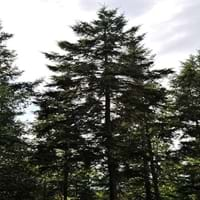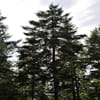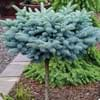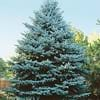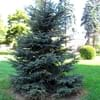Life Span
Perennial
Perennial
Type
Needled or Scaled Evergreen
Bulb or Corm or Tuber
Origin
North-Central United States
Hybrid origin
Types
Blue Spruce, Norway Spruce, Picea omorika
boissieri , cupanii , hungaricum , kesselringii
Number of Varieties
Not Available
Habitat
Bog Garden, Woodland Garden Canopy
Temperate Regions
USDA Hardiness Zone
2-7
Not Available
AHS Heat Zone
7-1
Not Available
Sunset Zone
A1, A2, A3, 1a, 1b, 2a, 2b, 3a, 3b, 4, 5, 6, 7, 14, 15, 16, 17
21,22
Habit
Pyramidal
Clump-Forming
Flower Color
Not Available
Purple, Violet
Flower Color Modifier
Bicolor
Bicolor
Fruit Color
Not Available
Not Available
Leaf Color in Spring
Green, Blue Green, Dark Green
Green
Leaf Color in Summer
Blue Green, Dark Green
Light Green
Leaf Color in Fall
Green, Dark Green
Several shades of Green
Leaf Color in Winter
Gray Green, Dark Green, Black
Light Green
Leaf Shape
Needle like
Long Linear
Plant Season
Spring, Summer, Fall, Winter
Spring, Fall
Sunlight
Full Sun, Partial Sun
Full Sun, Partial Sun
Growth Rate
Medium
Medium
The pH of Soil
Acidic, Neutral
Acidic, Neutral
Soil Drainage
Average
Well drained
Bloom Time
Not Available
Late Summer, Early Fall
Tolerances
Drought
Drought
Where to Plant?
Ground
Ground
How to Plant?
Seedlings, Semi-ripe cuttings
Divison, From bulbs, Seedlings
Plant Maintenance
Medium
Medium
Watering Requirements
Average Water Needs, Do Not over Water, Requires regular watering
Keep ground moist
In Summer
Lots of watering
Lots of watering
In Spring
Moderate
Moderate
In Winter
Average Water
Average Water
Soil pH
Acidic, Neutral
Acidic, Neutral
Soil Drainage Capacity
Average
Well drained
Sun Exposure
Full Sun, Partial Sun
Full Sun, Partial Sun
Pruning
Remove damaged leaves, Remove dead branches, Remove dead leaves, Remove dead or diseased plant parts
no pruning required
Fertilizers
All-Purpose Liquid Fertilizer, Apply 12-12-12 amounts, Nitrogen, Phosphorous, Potassium
All-Purpose Liquid Fertilizer
Pests and Diseases
Red blotch
Dry root rot, Pest Free
Plant Tolerance
Drought
Drought
Flower Petal Number
Single
Single
Foliage Texture
Fine
Coarse
Foliage Sheen
Glossy
Glossy
Attracts
Birds
Whiteflies
Allergy
Not Available
Poisonous to grazing animals
Aesthetic Uses
Showy Purposes
along a porch, deck or patio, Borders, Mixed Border, small hedge
Beauty Benefits
Not Available
No Beauty Benefits
Environmental Uses
Air purification, Shadow Tree, Wildlife, Windbreak
Air purification
Medicinal Uses
Antiseptic, Digestive, Diuretic, Laxative, Pectoral, Poultice, Salve, Skin Disorders, tuberculosis
anti rheumatic, cathartic
Part of Plant Used
Inner Bark, Seeds
Root
Other Uses
Gum, Pitch, Repellent, String, Tannin, Used as a dye, Used for woodware, Used in making musical instruments, Used in paper industry, Waterproofing, Wood is used in construction
Showy Purposes
Used As Indoor Plant
No
No
Used As Outdoor Plant
Yes
Yes
Garden Design
Feature Plant, Hedges, Screening, Wind Break
Container, Cutflower, Foundation, Lawns and Turf, Mixed Border
Botanical Name
PICEA glauca 'Densata'
COLCHICUM 'Lilac Wonder'
Common Name
White Spruce
Hybrid Autumn Crocus, Hybrid Meadow Saffron
In Hindi
Black Hills Spruce Tree
meadow saffron
In German
Weiß-Fichte
Herbstzeitlose
In French
Épinette blanche
Colchique d'automne
In Spanish
Picea glauca
Estado de conservación
In Greek
Black Hills Spruce Tree
meadow saffron
In Portuguese
Pinheiro-do-canadá
Colchicum autumnale
In Polish
Black Hills Spruce Tree
Colchicum autumnale
In Latin
Picea glauca
autumnale
Phylum
Coniferophyta
Tracheophyta
Class
Pinopsida
Magnoliopsida
Family
Pinaceae
Liliaceae
Clade
Not Available
Angiosperms, Monocots
Tribe
Not Available
Not Available
Subfamily
Barnadesioideae
Not Available
Number of Species
Not Available
Not Available
Season and Care of Black Hills Spruce and Meadow Saffron
Season and care of Black Hills Spruce and Meadow Saffron is important to know. While considering everything about Black Hills Spruce and Meadow Saffron Care, growing season is an essential factor. Black Hills Spruce season is Spring, Summer, Fall and Winter and Meadow Saffron season is Spring, Summer, Fall and Winter. The type of soil for Black Hills Spruce is Loam and for Meadow Saffron is Loam while the PH of soil for Black Hills Spruce is Acidic, Neutral and for Meadow Saffron is Acidic, Neutral.
Black Hills Spruce and Meadow Saffron Physical Information
Black Hills Spruce and Meadow Saffron physical information is very important for comparison. Black Hills Spruce height is 1,219.20 cm and width 365.76 cm whereas Meadow Saffron height is 12.70 cm and width 20.30 cm. The color specification of Black Hills Spruce and Meadow Saffron are as follows:
Black Hills Spruce flower color: Not Available
Black Hills Spruce leaf color: Green, Blue Green and Dark Green
Meadow Saffron flower color: Purple and Violet
- Meadow Saffron leaf color: Green
Care of Black Hills Spruce and Meadow Saffron
Care of Black Hills Spruce and Meadow Saffron include pruning, fertilizers, watering etc. Black Hills Spruce pruning is done Remove damaged leaves, Remove dead branches, Remove dead leaves and Remove dead or diseased plant parts and Meadow Saffron pruning is done no pruning required. In summer Black Hills Spruce needs Lots of watering and in winter, it needs Average Water. Whereas, in summer Meadow Saffron needs Lots of watering and in winter, it needs Average Water.
